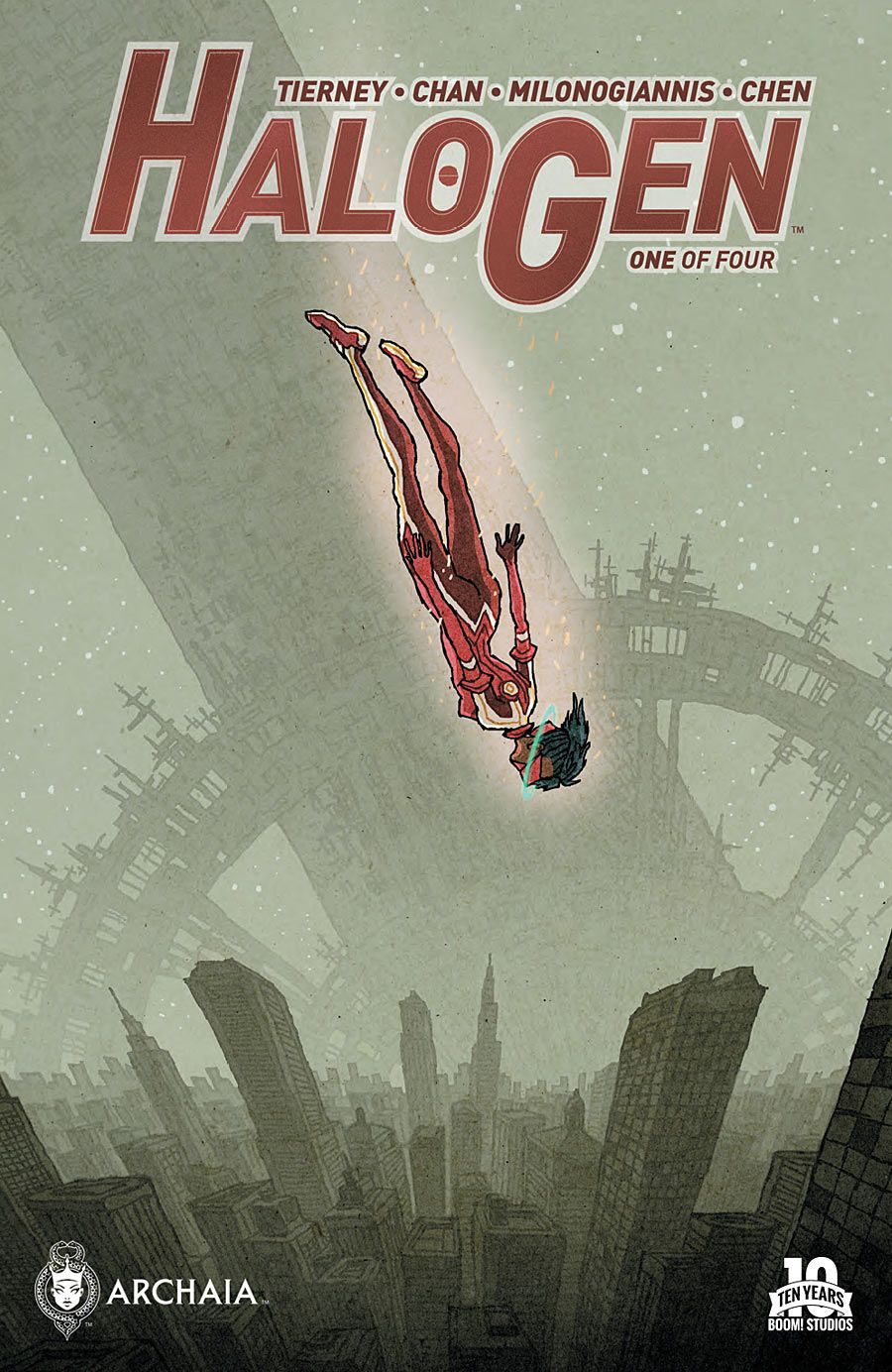"HaloGen" #1 is a dense first issue that refuses to hold the reader's hand. In it, Rell -- a hologram-generating agent for HaloGen -- works to discover the location of a god's corpse, but there are plenty of people who want it to stay hidden. Josh Tierney and Afu Chan's world of dead gods and corporate espionage has plenty to say and holds plenty to see, but it isn't always a smooth read. In his attempts to avoid much outright exposition, Tierney often draws the readers' attention to the very thing he's trying to hide: the artifice of his characters' conversations. Afu Chan and Shelly Chen's ragged, multicolored universe is often lively, but it isn't particularly varied. If these smaller problems smooth out over the next few installments, "HaloGen" will be a satisfying deep dive of a miniseries.
Chan's distinctive, jagged art immediately gives "HaloGen" #1 a sense of place. From Det'houna's knotted-rope corpse to Jae's spiked hair, Chan's lines have a concrete texture to them. Shelly Chen's warm colors brighten up this lived-in look, creating a rugged space-adventure atmosphere that's inviting and authentic. Though I like the overall feel, Chan's facial expressions aren't always the most effective, and sometimes characters' expressions look more like death masks. I'd like to see the jauntiness of his work reach the characters' faces, too.
The script is certainly full of ideas, but Tierney makes a few odd choices that detract from an otherwise excellent read. Though the issue opens with straightforward, captioned world building, the rest of the story doesn't involve much explanation. After introducing the dead god Det'houna and Cityship Q, Tierney couches information about Rell and Krallix's world in dialogue. Lines like "Yanni may have built your suit, but I'm the one who thought to incorporate passive data-mining" stand in for traditional info dumps, and the reader is meant to pick things up from these lines. However, some of the incorporations are clumsier than others, and they read as over-obvious.
The positive result of this approach, though, is that the issue also feels very dense. The reader has to pick up so many little pieces of the world and make short mental leaps to put them together. It's satisfying detective work. For example, when Tierney describes the two-tiered Cityship Q, he describes the fancier half as "the flower" and then the next page opens in "a bar in the root." The reader has to continue the metaphor in order to understand the caption -- not exactly a Herculean task, but the mental exercise did make me feel like I was discovering as I read. Part of the appeal of science fiction is that act of discovery in a new universe, so it's delightful that Tierney's script emphasizes and augments that feeling.
Altogether, "HaloGen" #1 has an intriguing world and a curious plot to keep me coming back for issue #2. If the creative team's execution can get just a touch smoother, this miniseries will be a real winner. Fans of Tierney and Chan's past work won't be disappointed.

